Old Galway
THE CINEMA SITE, SALTHILL
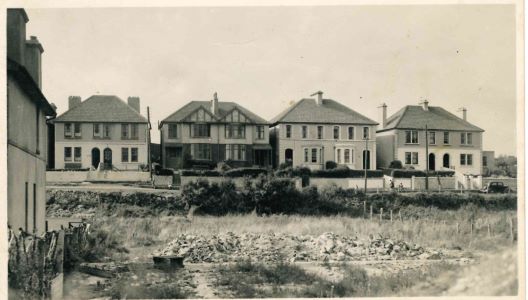
by Tom Kenny
Lenaboy is the name of one of the townlands of Salthill. It derives either from the Irish Léana Buí, the yellow fields/land or Léana Báite, the sunken or drowned land. The latter explanation is the most likely as we look at this photograph of “The Cinema Site” taken from the main road at Kingshill in Salthill. It was so-called locally because James Stewart & Co. tried to build a cinema there in the 1940’s. Unfortunately, because of the boggy nature of the ground, the pylons they were sinking in order to put in a foundation kept sinking and disappearing and so the project was abandoned. In the 1960’s, an enormous amount of filling was gradually put into the site and eventually, John King built a block of apartments there.
SOME GALWAY FOUNDRY STAFF

by Tom Kenny
At the beginning of the last century, Beatty Brothers had a foundry in Mill Street. In 1913, they advertised ‘a desire to announce that their factory was fitted with a first-rate plant for the manufacture of spades and shovels. Tons of them were sold last season’.
ASHBOURNE CUP WINNERS, 1968

by Tom Kenny
As part of the national enthusiasm for restoring a Gaelic Ireland at the beginning of the last century, experimental rules for a female stick-and-ball game were drawn up in 1903 and the first public match took place that year. The game of camogie was officially launched. The first All-Ireland final was played in the Sportsground when Dublin defeated Galway in 1933.
DÚN UÍ MHAOILÍOSA, A BRIEF HISTORY
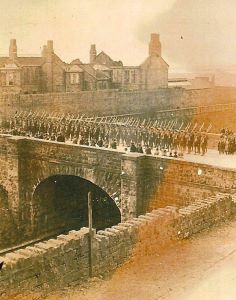
by Tom Kenny
In 1852, the British War Department bought lands at Renmore with the idea of building a new military barracks to replace the existing ones in the city, the Shambles and the Castle Barracks. These two building complexes were getting old and deteriorating and needed to be superseded. In 1880, the new Barracks were built at Renmore. It was occupied by the Royal Irish Fusliers and later by the Connaught Rangers.
LENABOY AVENUE, c.1890
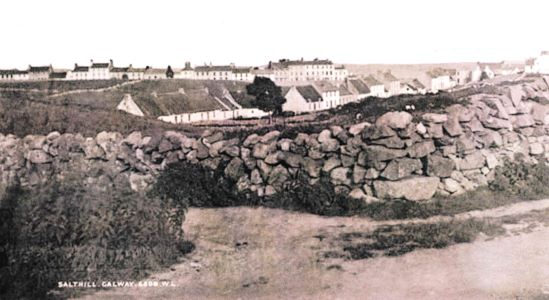
by Tom Kenny
This photograph was taken from the top of Dalysfort Road (which seems to have been little more than a track at the time) and shows Lenaboy Avenue at the bottom of the hill and part of the main Salthill Road in the distance. Most of the buildings in the Avenue were part of the Whaley Estate. Many of the occupants were fishermen and many of them had seaweed rights which were quite valuable at the time. The avenue was a main pathway to the shore for people living inland at the time.
AN OLD GALWAY TAXI RANK
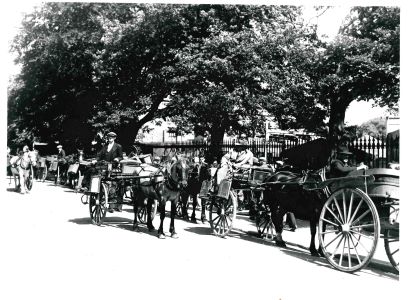
by Tom Kenny
The word hackney derives from the place name Hackney in London which supplied horses from the surrounding meadows. An ordinance for the regulation of hackney-coachmen in London was approved by the English Parliament in 1654 to ‘remedy the many inconveniences (that) do daily arise by reason of the late increase and great irregularity of coaches and coachmen.’ The first hackney-carriage licences date from 1662. Licences applied literally to horse-drawn carriages, later modernised to ‘hansom cabs’ that operated as vehicles for hire.
SEVEN WONDERS
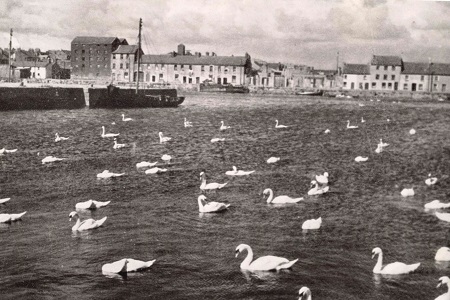
by Tom Kenny
I was asked a question some time ago that stopped me in my tracks, “What, for you, would be the seven wonders of Galway”? It made me think long and hard and I decided to draw up a list. It might be the sunrise on the bay on December mornings, the sunset on the bay on November evenings, the atmosphere on the streets, hearing Irish spoken on the streets, Druid, An Taidhbhearc, The Pádraic Ó Conaire statue, the tower at Blackrock, the Saturday market, the River Walk, Lynch’s Castle, The Arts Festival, Galway Oysters, the Garden of Remembrance, Cúirt and so on. All of these are important to me, a source of joy to me, parts of the fabric that make up this city I am proud to live in.
GREALISHTOWN, A BRIEF HISTORY

by Tom Kenny
Grealishtown is the terrace of houses on the Bohermore Road opposite the New Cemetery. This was the main road into Galway from the east, An Bóthar Mór and it is probably as old as Galway itself. There were major fortifications in the area during Cromwellian times and there was a lot of military activity in the vicinity at the time. The new cemetery walls and chapels were completed by Thomas Nugent in 1880, and this part of the road was referred to as ‘Cemetery Hill’ for a time.
.png)